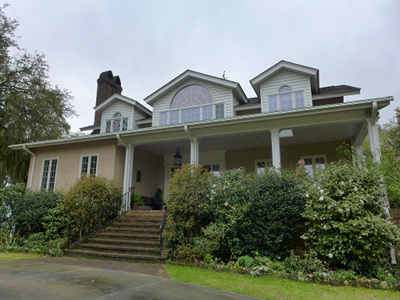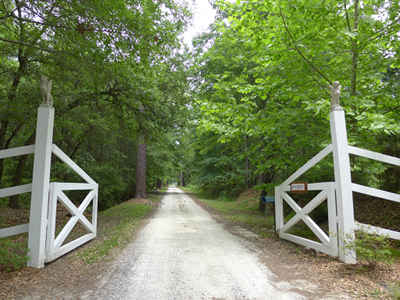Rosemont Plantation – Black River – Georgetown County
Basic Information
- Location – Black River, Georgetown County
- Origin of name – ?
- Other names – ?
- Current status – ?
Timeline
- 1705 – Earliest known date of existence (2, p. 413)
John Perrie received a royal grant (2, p. 413).
- ? – House built
- Circa 1750 – John Perrie's daughter Mary and her husband John Cleland acquired the property (2, p. 413).
- 1755 – Robert Weaver purchased 284 acres along the Black River from the Clelands (2, p. 413).
- 1759 – Weaver sold the plantation to Archibald Baird. Baird was previous owner John Cleland's nephew. Baird added to Rosemont when he purchased an additional 282 acres from Cleland (2, p. 413).
- ? – Baird died and his will stipulated the plantation go to his son William Archibald Baird but would go to his wife Winifred if William should die (2, p. 413).
- 1788 – William Archibald Baird died so the plantation was transfered to his mother Winifred who had remarried to John Wilson (2, p. 414).
- 1794 – Winifred Wilson, now widowed for a second time and soon to marry Michael Coppinger Sweetman, conveyed the two tracts that made up Rosemont to William Prestman (2, p. 414).
- 1795 – Prestman conveyed the plantation to Charles Pinckney. Pinckney had signed the US Constitution and served as the governor of South Carolina, a US senator, and a US representative owned Rosemont. Winifred Sweatman gave Pinckney a mortgage on Rosemont (2, p. 415).
- 1824 – Pinckney died leaving an estate riddled with debt. Rosemont was placed into trust for Pinckney's heirs. Henry Laurens Pinckney would plant the fields at Rosemont for several years (2, p. 415).
- 1833 – Benjamin Allston Sr. purchased the plantation from Pinckney (2, p. 415).
- 1847 – Allston passed away leaving Rosemont to brothers John Francis Pyatt and Joseph Benjamin Pyatt, his grandsons (2, p. 415).
Rosemont remained in the Pyatt family for several generations (2, p. 416).
- 2001 – Reverend C. FitzSimons and Martha Parker Allison owned Rosemont which has a modern house on it. Martha Parker is a Pyatt family descendant (2, p. 416).
Land
Slaves
- Number of slaves – 18 in 1833 (2, p. 413)
References & Resources
- George C. Rogers, Jr., The History of Georgetown County, South Carolina
(Spartanburg, SC: Reprint Company, 1990)
 Order The History of Georgetown County, South Carolina
Order The History of Georgetown County, South Carolina - Suzanne Cameron Linder and Marta Leslie Thacker, Historical Atlas of the Rice Plantations of Georgetown County and the Santee River
(Columbia, SC: South Carolina Department of Archives and History, 2001), pp. 413-416
 Order Historical Atlas of the Rice Plantations of Georgetown County and the Santee River
Order Historical Atlas of the Rice Plantations of Georgetown County and the Santee River




